Meet Wakefield's cricketing Warrior, and his traditional bat-making empire


But in the dead of winter, and with the English cricket season a long way off, a master craftsman is still hard at work in his city centre workshop, carving out a living.
Ian Sampson makes cricket bats, and unless you know your LBW from a reverse sweep, you’ve probably have never heard of him.
Advertisement
Hide AdAdvertisement
Hide AdYou’ve probably walked passed his workshop without realising it - just behind the Elephant & Castle pub on Westgate. Not so much hidden in plain sight, but just plain hidden.
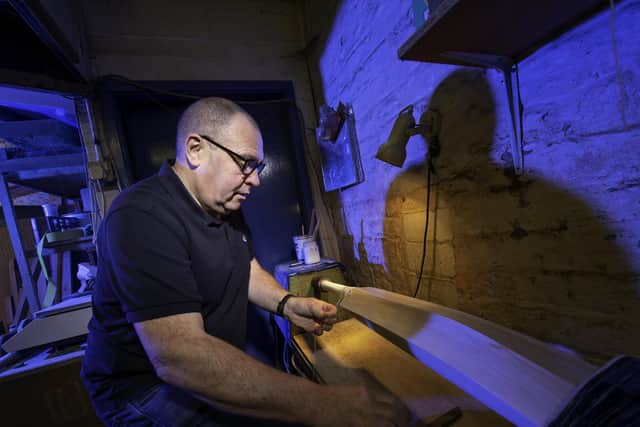

For decades he has been hand-crafting bats, having worked at the defunct Slazenger factory in Horbury Bridge for more than 30 years before it shut in 2002.
After setting up a bat-making company with his business partner Fred Freshney, Ian was given the chance to take over Richard Wensley’s Warrior bat-making empire in Wakefield a number of years ago, and continues to make bats like they were before mass industrial production.
Ian, 62, said: “For the bats to be still handmade in the traditional way, I’m not sure how many there are still doing it, but there can’t be that many.
Advertisement
Hide AdAdvertisement
Hide Ad“Most come off machines these days and I’d say 95 per cent-plus come in from India or Pakistan.
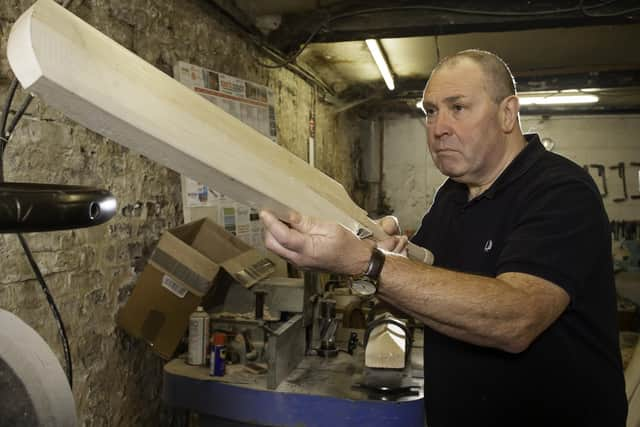

“They use good willow but it’s Kashmiri willow which is much harder and more dense than English willow. English willow is the best in the world.”
By that definition, Ian’s bats are among the best you can buy, but he’s far too modest to say that outright. It just wouldn’t be cricket.
There’s certainly no room for glitz and glamour - his workshop is testimony to that. It’s a rustic workplace where wood shavings and sawdust cover the floor and odd-looking tools of all shapes and sizes hang from the bare brick walls.
Advertisement
Hide AdAdvertisement
Hide AdWith no central heating, he even uses cast off chunks of willow to burn and heat the workshop stove during the winter months.
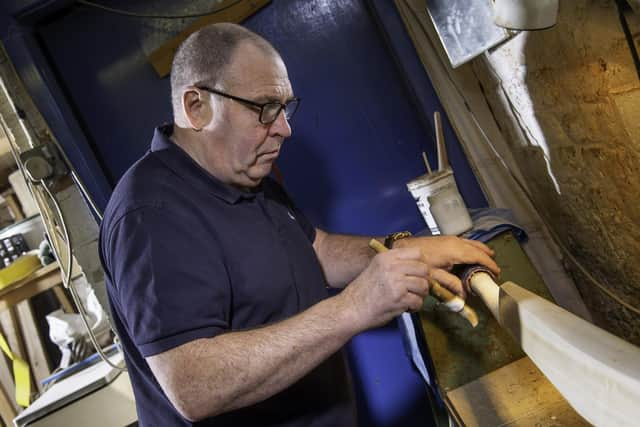

Ian bought some of the machinery from Slazenger when they closed, but don’t be fooled, these custom-made bats are largely handcrafted with microscopic precision.
One of Ian’s friends even tells me that watching him produce a bat is like seeing a surgeon at work.
With only perfection good enough, Ian starts with only the best materials bought from JS Wright & Sons in Essex.
Advertisement
Hide AdAdvertisement
Hide AdAgain, if you know about cricket, they are the world’s most famous, oldest and most trusted suppliers of English willow for cricket bats.
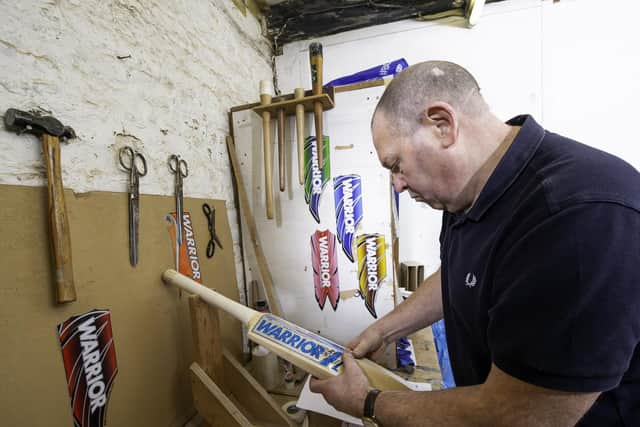

Ian makes two trips a year from his home in Stanley to handpick the exact clefts he wants.
Each piece is then cut, planed, spliced, pressed and sanded before the handle is wrapped in twine and then the blade stickered up.
Honing his craft over decades, the difference between his bats and mass-manufactured products is that only when the bat looks perfect, and more importantly, sounds perfect, will he continue onto the next process.
Advertisement
Hide AdAdvertisement
Hide AdWith a cricket ball always within reach, he is constantly bouncing the ball off the blade of the bat and knows exactly the sound it should be making.
He painstakingly adds pressure to the bat to harden the wood, preparing it for years of use. It’s something mass-manufacturing can’t compete with.
“Every bat feels different,” he says.
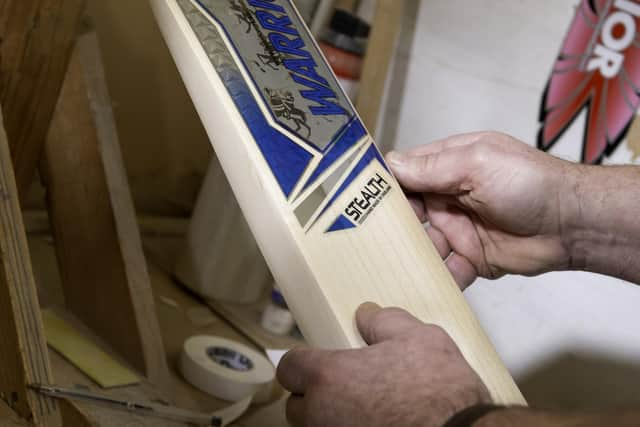

“I can make two a day, if I’ve got everything set out, but this is not something you can learn overnight.”
Ian grew up in Carlton near Rothwell, growing up opposite a cricket field.
Advertisement
Hide AdAdvertisement
Hide AdA keen sportsman, he played Rugby League in the late 70s and early 80s, turning out for Batley and Hunslet, when their home ground was Elland Road.
It was only when he saw the advert to join Slazenger did cricket bats become his passion.
“I thought I’d be working down the pit but my dad said I wasn’t going to do that!
“When I left school I had no idea what I wanted to do, but I saw the job and I thought ‘that’s for me’.
Advertisement
Hide AdAdvertisement
Hide Ad“It’s all I’ve done and ever known. I’m very proud of making these bats, immensely so, I get completely lost in the work when I’m doing it.
“I’ve got friends who come in who joke that I don’t even work, and they’re right, it’s a real labour of love.”
For the love and precision craftsmanship that goes into each bat, they’re priced at £250 each, but they are the choice of some of the world’s leading players.
Due to sponsorship deals, he is unable to go into detail about who uses his bats, but admits there were some top-level players hitting boundaries during this summer’s world cup.